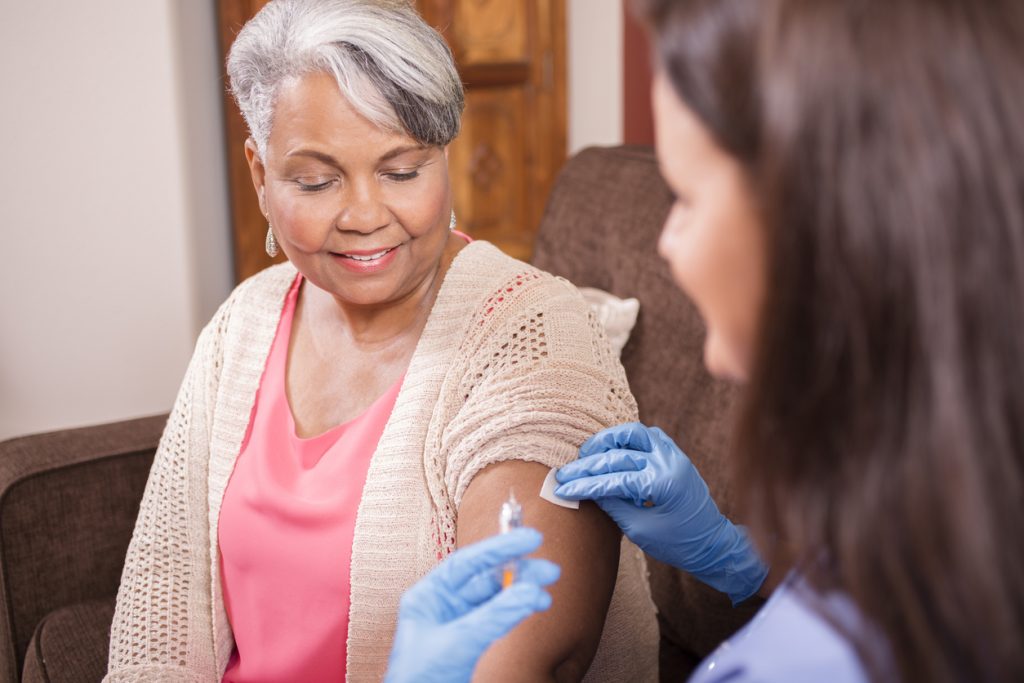 Employees with more sick leave benefits are more likely to get a flu shot.
Employees with more sick leave benefits are more likely to get a flu shot.
Employees with paid sick leave are more likely to take better care of themselves.
But it's not just the presence of paid sick leave, according to the study "How Many Sick Days Are Enough?"—it's the number of days.
Recommended For You
Researchers from Florida Atlantic University and Cleveland State University investigated the link between an employee's number of paid sick leave days and the employee's use of preventive health care services, such as getting a flu shot.
And the first study of its kind found that the more paid sick leave an employee has, the more likely that employee is to engage in self-care behaviors—not just flu shots, but other preventive measures too.
Researchers measured specific preventive health care services among American workers, ages 49–57, and figured out that the optimal range of paid sick leave days to significantly increase the odds that American workers will get a flu shot, have their cholesterol or blood pressure checked, and get a fasting blood sugar test to check for diabetes is at least 10 or more.
Female workers need at least six to nine paid sick leave days to boost the odds that they'll get a mammogram.
Earlier research only looked at what happens in the presence or absence of paid sick leave, not how many days of such leave it takes to modify workers' behavior.
But this study, in addition to seeing how many days it will take to improve employee wellness behavior, also finds a disconnect between how much paid sick leave is actually offered to U.S. workers and the number of days it will take to effect change.
"It took 10 or more days—more days than are mandated in any of the local U.S. paid sick leave laws—for us to see statistically significant increases in the likelihood of reporting having received a flu vaccination, mammography, and screenings for blood sugar and blood pressure," LeaAnne DeRigne, Ph.D., lead author of the study and an associate professor in the Phyllis and Harvey Sandler School of Social Work within FAU's College for Design and Social Inquiry, is quoted saying in the report.
DeRigne adds, "For policy makers who want to increase preventive health care services use in this age group, a longer and more generous paid sick leave plan of at least 10 days should be considered."
Researchers classified sick leave days into four categories: high level, 10 or more days; moderate level, six to nine days; low level, three to five days; and very low to none, zero to two days.
Overall, they found that there was a 26–85 percent increase in preventive health care use among those with at least 10 or more paid sick leave days, compared to those with zero to two paid sick leave days. Preventive mammography rose 55 percent.
Among workers with 10 or more paid sick days, flu shots increased by 33 percent, while blood sugar screening rose by 28 percent and blood pressure checks were up 69 percent, while cholesterol screening was up by 34 percent—compared with workers with zero to two paid sick leave days.
The vast majority of study subjects—93.5 percent—reported having health care insurance or a health care plan.
While the median number of paid sick days was seven, more than a quarter—almost 27 percent—had no paid sick leave. Just 10 percent had 20 or more paid sick days, with 43 percent falling into the high category of 10 or more paid sick leave days.
© 2025 ALM Global, LLC, All Rights Reserved. Request academic re-use from www.copyright.com. All other uses, submit a request to [email protected]. For more information visit Asset & Logo Licensing.







